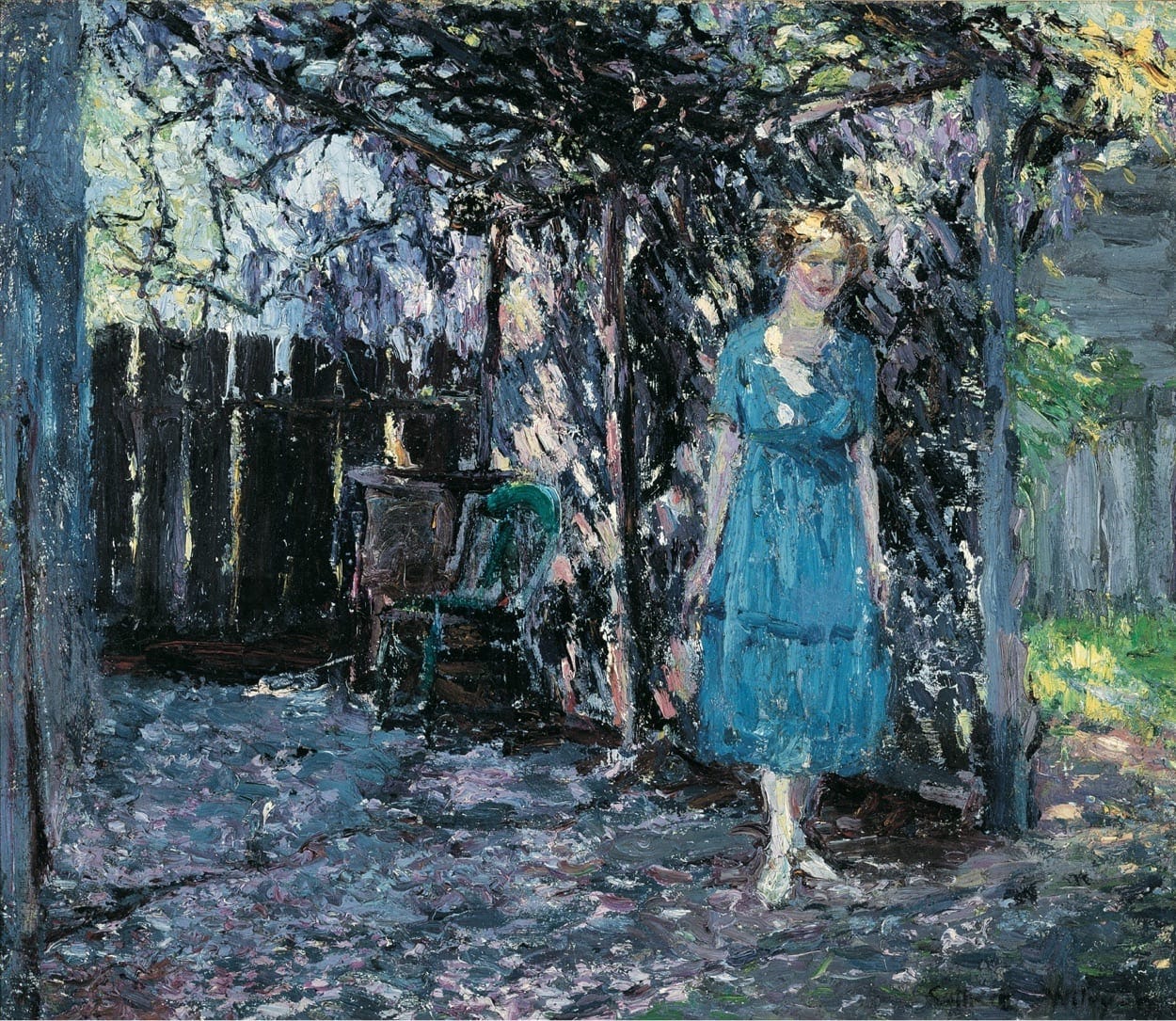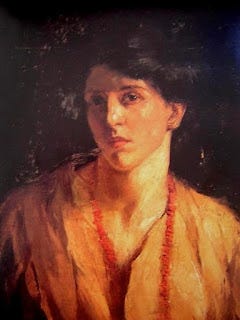Intrinsically Appalachian: I’ve Sat in the Sun of Catherine Wiley’s Morning
When I first saw Catherine Wiley's painting "Morning" at the Knoxville Museum of Art, I whispered to myself, "I get it. I've sat in this same sun." I didn't know how extremely true that statement was.
Ever heard of the Coal Creek War? For my readers outside of East Tennessee, the answer is more than likely no. This labor uprising in Coal Creek, TN (later Lake City, now Rocky Top) was ignited in the late 1800s in response to independent coal miners being replaced with cheaper labor from convict laborers leased from the Tennessee state prisons. The uprisings led to the indictments of about 300 coal miners.
This is the world that impressionist Catherine Wiley was born into.
And the aftermath of this small town’s labor uprising? That’s the world that I was born into.
The 2010 census estimated that mine and Wiley’s Appalachian hometown had about 1700 people in it. Then the central location of a statewide labor uprising and now dubbed by CNN of 2014 as the “meth capital of the Appalachia” with a “median income of $14,000” annually, two things about my hometown seem to be eternal: Coal Creek/Rocky Top is deeply entrenched in generational poverty, while also being beautifully and intrinsically Appalachian.
The world I come from is one that’s hard to understand unless you’ve been there and lived it.
Maybe that’s why I love Catherine Wiley’s Morning so much.

Just LOOK at this painting! Every time that I visit the Knoxville Museum of Art, I spend at least 10 minutes just taking it in.
When I first saw this painting, I whispered, “I’ve sat in that same sun.” At this point, I wasn’t familiar enough with Wiley to know just how literal that statement was. To be Appalachian is to dream; being trapped in a dialectical paradox of loving the world surrounding you while also longing for more. I, too, have sat in the Coal Creek sun after the bath, uncompelled to move, thinking about possibilities and impossibilities alike. The air in that picture feels tangible in its nostalgia, like I could walk right into that painting and into my childhood bedroom.
Originally unfamiliar with Wiley’s hometown, I meant something different when I said that “I’ve sat in that same sun.” Many of Wiley’s paintings portray the subject as bright, but unrealistic and out-of-reach, with a foreboding darkness in the background.
A part of you wonders, “what is she thinking?” But, if you’ve ever experienced depression, you already know the answer. The thick, chaotic brushstrokes are complete thoughts in and of themselves. Like the colors on the painting, she is torn between the darkness and the promising light of day. Like the brushstrokes, her thoughts are chaotic and calm at the same time. There is this irony when anxious mental monologues finally go quiet. How are you just… not thinking? You are, of course, still thinking. Your thoughts are just further away from you right now. Should you grasp for them or sit here in the light? Everything is a contradiction as she thinks simultaneously about nothing at all and everything at once.
While the darkness in Morning is certainly present, I don’t think of it as particularly frightening. Rather, it seems to me to be something the woman has just accepted. The darkness is to the side, but still there and still heavy. It’s not overwhelming yet. Through the years Wiley’s paintings become darker and darker, with the viewer increasingly having to fight harder to make sense of the light. Morning is what it looks like before it gets to that point. A lot of people with Major Depressive Disorder describe the times that they aren’t actively in a depressive spell as feeling like they are “floating on water:'' the depression is still there, and you can feel it surrounding you, but you aren’t drowning right now. You’re not drowning, you’re not fighting, you’re not swimming, but you also aren’t free from depression. It’s still there, and you’re just floating.

As Catherine Wiley’s depression escalated, she was eventually permanently institutionalized. Not much is known of her life past that point. Her paintings invite you in to feel and experience her story with her. To be the daughter of a coal mine owner during political, economic, and social turmoil. To love art and beauty in life so deeply, while also watching as your mind forsakes itself to the ever-growing darkness.
If you ask me, Catherine Wiley’s talents are underappreciated, but her story is being told through her paintings at the Knoxville Museum of Art. If you ever get the chance to experience Wiley’s art in person, do not pass up the opportunity. (Plus, admission to the museum is free!)
No matter where you’re from, you can feel the emotion that Catherine Wiley captures in Morning, but for me, what makes Morning really shine? I’m also a Coal Creek Appalachian girl with mental health problems living in a time of political and social turmoil. I try so hard to capture and create light, too. Like I said, I’ve sat in that same sun. I am Morning.
** To learn more about the Coal Creek War, be sure to visit the Coal Creek Miners Museum in my hometown, Rocky Top, TN. If you can, please support both the Coal Creek Miners Museum & the Knoxville Museum of Art to ensure that these beautiful stories of our home are preserved.



